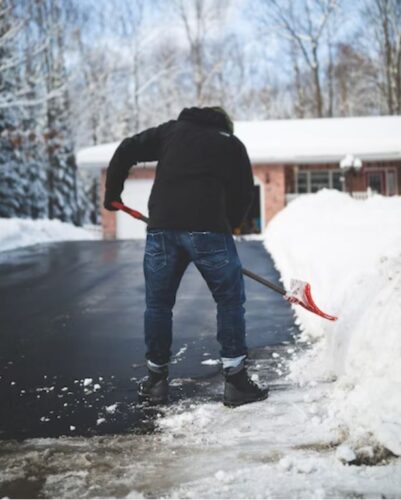Winter is well and truly with us, and with it come a host of seasonal activities. The environmental changes around us affect the places we work, and this can have a knock-on effect to health and safety – particularly if you haven’t made any accommodations for them.
The lower temperatures and longer days completely change how we use our workplaces, and how we navigate to and around them. All of this should be factored into your safety planning, and communicated to employees. If you haven’t thought about how the winter weather affects health & safety before, here are five of the most common issues to watch out for.
1. Cold
Low temperatures can pose a genuine and serious health and safety risk, particularly if any employees are working outdoors. Cold weather has been proven to weaken our immune systems, killing cells in the nose that fight against disease, and can exacerbate physical injuries, as well as causing more serious illnesses. Beyond this, cold temperatures also impact on people’s ability to work, making it a matter of economic imperative as well as a safety issue.
The cold weather also brings with it ice and snow, which carry a whole range of risks. Ice in particular can be a major slip hazard on paths and other paved areas in and around a facility, while snow can obscure and worsen this risk. Cold temperatures should be addressed through proper climate control, as well as warm clothing for outdoor work. Paths and car parks meanwhile should be cleared and gritted regularly before people arrive to prevent slip and trip hazards.
2. Darkness
For many parts of the world, winter brings with it some extremely short days, leaving commutes to and from work in darkness. This not only makes driving and crossing roads more dangerous (particularly if the infrastructure around your workplace is lacking), but can also obscure hazards around your workplace, whether that’s ice, leaves, or other slip, trip and fall hazards.
Darkness can also cause and worsen fatigue if there isn’t sufficient workplace lighting, leaving people even more tired during the last few hours of the day. Darkness can also affect people’s moods through seasonal affective disorder (SAD), putting people’s mental health at risk. Workplace lighting should be bright and cold without causing glare or eye strain, while extra accommodations should be made to support good mental health during the winter period.
3. Pollution
An underappreciated factor during the winter months is the elevated levels of air pollution. The use of wood burners and other fuel sources can create indoor air pollution, something that may be worsened by closing windows. Other pollutants such as dust and cleaning products can also accumulate indoors without sufficient ventilation, potentially causing breathing problems and a range of long-term illnesses.
Traffic jams are also more common in winter due to poor road conditions, lower speeds, and more people travelling via car than on foot or by bicycle as a result of the weather. This can further worsen air quality around the workplace, and permeate the air inside. Air conditioning can help to purify the air, as can many houseplants. An abundance of plants also helps to oxygenate the air, which can have additional benefits for cognitive tasks and general productivity.
4. Fires
Fires are a well-regarded hazard at home, where warnings about Christmas trees, electric blankets and dodgy batteries have been rife for years. However, the workplace is also more prone to fires during the winter months. Many offices either lack central heating or augment it with electric heaters, many of which may have been in use for years. These can sometimes end up being left on overnight to ensure the office is warm for the following morning.
It should go without saying that no heater – or indeed any electronic device – should be left on for long periods without supervision. This includes laptop computers that go into a low power ‘sleep mode’, as recent evidence suggests that under the right conditions, both Windows laptops and Macbooks can exhaust their batteries and reach high temperatures even when they are closed. Devices brought into work should also be PAT tested to ensure they are up to standard before being used.
5. Illness
Huddling together in warm, stifling offices may reduce some of the risks of getting ill, but it increases a bigger one: airborne disease. The coronavirus, colds and flu are all prone to be spread around offices in the winter, particularly when people feel obliged to come into work even when they are ill. The downturn in mask wearing in most workplaces (and public places) is also a contributory factor, and an unfortunate case of a lesson not being learned.
A well-maintained HVAC system can help to reduce the spread of airborne diseases by filtering air, and ensuring that areas are well ventilated. Beyond this, it may be worth thinking about instigating some of the measures utilised during the height of the pandemic, such as social distancing, mask wearing and sanitiser. Home working may also be an option, particularly after the Christmas holidays, when illness is likely to be rife.
Winter is one of the most obvious periods for elevated safety risks, yet few accommodations are ever made for it in health & safety policies, or business’ daily implementation of health & safety principles. With this guide, we hope you can identify the main risks for your business in key areas, and outline strategies to help keep people safe in the winter workplace.

